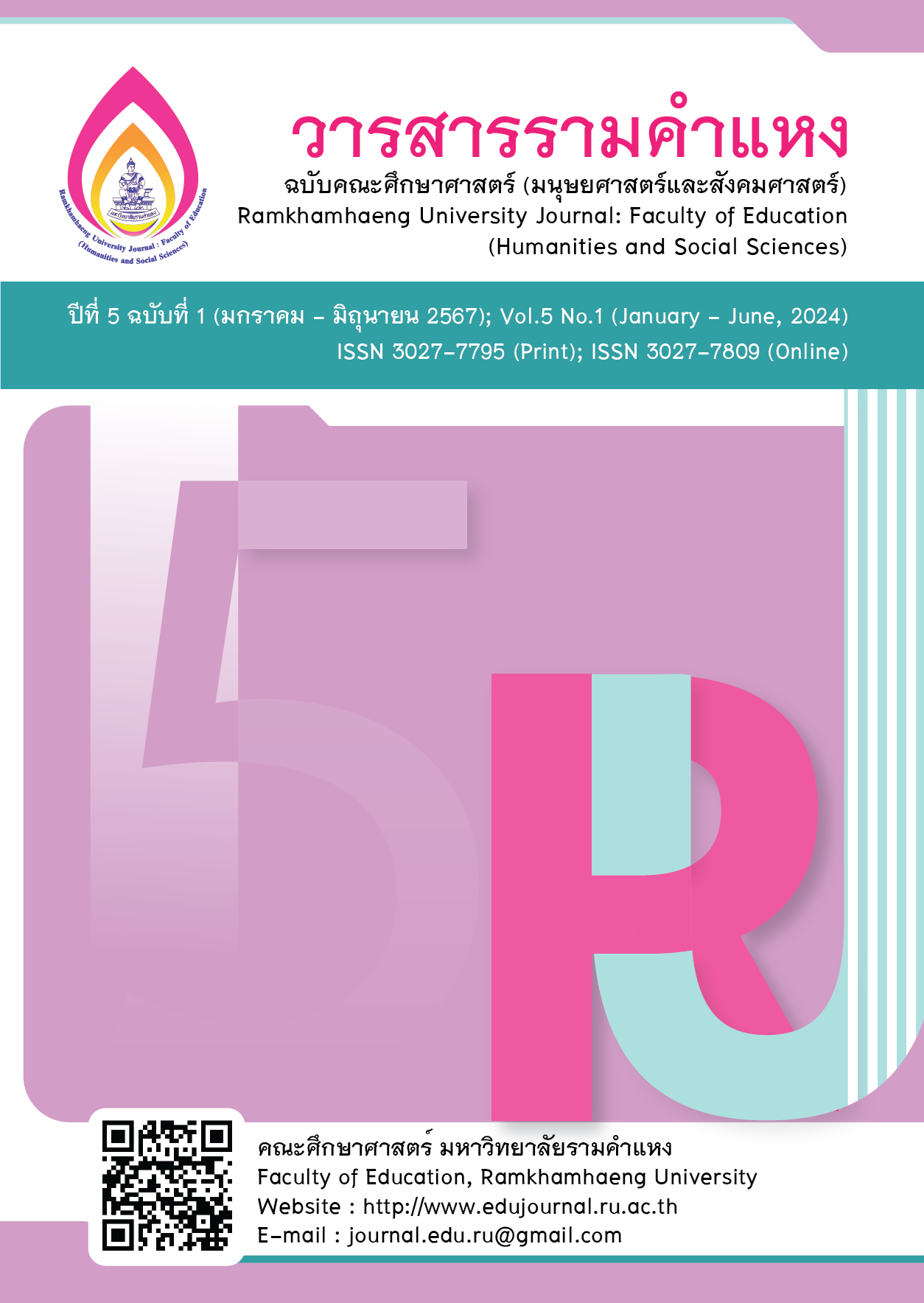Team-based Learning Using the Learning Together (LT) Method Through the Teaching of Human Rights and Peace Education in Social Studies Subjects
Main Article Content
Abstract
The article aimed to (1) present team-based learning through the Learning Together (LT) method in the subject of Social Studies on Human Rights and Peace in order to promote and develop desirable characteristics and strengthen collaboration skills of students, and 2) provide guidelines for creating core competency building activities on the basis of solidarity (team spirit), which is essential for learning, working, and daily life, using the LT concept in junior high school students, Chulalongkorn University Demonstration Secondary School. When discussing the subject of human rights and peace using the LT concept, it was found that students within each subgroup were capable of expressing a variety of opinions, giving rational support and argumentative opinions on the issues being discussed, and successfully completing assigned tasks both in groups and individually. As a result, LT-based learning activities are highly beneficial for pedagogy and provide social studies teachers with an additional method of promoting learning activities, helping secondary school students develop desirable characteristics and collaborative skills, and enhancing core competencies of solidarity.
Downloads
Article Details

This work is licensed under a Creative Commons Attribution-NonCommercial-NoDerivatives 4.0 International License.
ผู้ส่งบทความ (และคณะผู้วิจัยทุกคน) ตระหนักและปฎิบัติตามจริยธรรมการวิจัยอย่างเคร่งครัด ทั้งนี้บทความ เนื้อหา ข้อมูล ข้อความ ภาพ ตาราง แผนภาพ แผนผัง หรือข้อคิดเห็นใดๆ ที่ปรากฎในบทความ เป็นความคิดเห็นและความรับผิดชอบของผู้ส่งบทความ กองบรรณาธิการไม่จำเป็นต้องเห็นตามเสมอไป และไม่มีส่วนรับผิดชอบใดๆ โดยถือเป็นความรับผิดของของเจ้าของบทความเพียงผู้เดียว
References
Chulalongkorn University Demonstration School. (2022). Student and Parent Handbook for the Academic Year 2022. https://satitm.chula.ac.th/images/pdf/std_manual65.pdf (in Thai)
Gibson, D. R., & Campbell, R. M. (2000). The role of cooperative learning in the training of junior hospital doctors: a study of pediatric senior house officers. Medical Teacher, 22(3), 297-300. DOI: https://doi.org/10.1080/01421590050006296
Jaithiang, A. (2007). Theory of teaching (4th ed.). Odean store. (in Thai)
Johnson, D. W., & Johnson, F. P. (1987). Joining together: Group theory and group skills (3rd ed.). Prentice-Hall.
Johnson, D. W., & Johnson, F. P. (1991). Joining together: Group theory and group skills (4th ed.). Prentice-Hall.
Khaemanee, T. (2005). Instructional methods: varied alternatives (3rd ed.). Chulalongkorn University Press. (in Thai)
Moonkum, S. A. (2003). 19 Learning Strategies: Enhancing Knowledge and Skills. Parbpim Printing. (in Thai)
Office of Human Resource Management, Chulalongkorn University. (2017). Core Competency Handbook. https://www.hrm.chula.ac.th/newhrm/wp-content/uploads/2017/11/core_compotecies_print_v8_-1-V1-1.pdf (in Thai)
Office of the Basic Education Commission. (2017). Key Performance Indicators and Content Focus: Social Studies, Religion, and Cultural Learning. https://drive.google.com/file/d/0B9t56k6dmUe5Z202Wmw5S1dvOGM/view?resourcekey=0-5dzEmHF7yipsPKfkZShqjw (in Thai)
Pimthong, N., & Thongaem, A. (2016). The development of cooperative learning by learning together technique for health education subject, Matthayomsuksa 3 students. Graduate Journal Dhurakij Pundit University, 4(3), 880-890. (in Thai)
Rangabthuk, W. (2000). Student-Centered Teaching Plan (3rd ed.). Watanapanich Printing. (in Thai)

